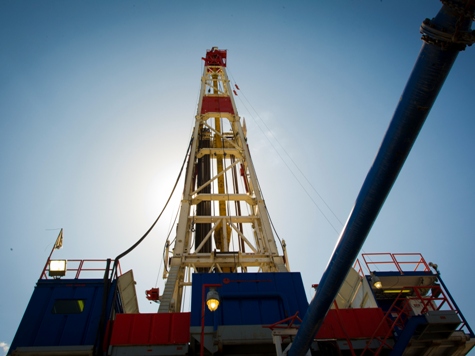The estimate for Cuadrilla’s shale gas resource in England’s north-west Bowland Shale formation has just received another significant boost. After conducting further studies, a company geologist now puts the deposit at around 330 trillion cubic feet (tcf); an increase of 50 percent on its previous – believed to be a highly conservative – assessment of 220 tcf.
And that is just in Cuadrilla’s own licensing area. Last summer an independent British Geological Survey(BGS) suggested the total in the shale basin may well exceed a mind-boggling 1,300 tcf.
To put that in perspective, even on Cuadrilla’s lower assessment, this would make the UK’s Bowland Shale deposit the largest shale gas basin in the world.
If the BGS is right, it far exceeds most other global shale plays. It would also mean the the Bowland Shale gas resource alone could supply all domestic British gas needs for over half a century.
Writing in the Guardian on Cuadrilla’s earlier assessment in July 2013, environmentalist Bjorn Lomborg, described by Time magazine as “one of the seminal thinkers of our time”, pointed out could add £7 billion to the UK economy, creating thousands of jobs while cutting carbon emissions dramatically. He went on to say that the Bowland Shale deposit even then had the power to reignite the UK economy.
To the Bowland Shale, of course, we must add earlier estimates for numerous other significant UK deposits including estimates in Dorset (for shale oil) and the Weald, Lincolnshire and elsewhere in England and Wales(shale gas).
The latest estimates come at an apposite time. Just this week, British Gas owner Centrica, which has a controlling interest in Cuadrilla, warned that Britain’s energy security is increasingly at risk. Speaking at a conference in Houston last week, Centrica’s Sam Laidlaw announced that primary energy production of gas in the UK was falling rapidly. “North Sea oil and gas output has fallen by 30 percent over the last three years,” Laidlaw said.
He added, “By 2020 we will be reliant on imports to meet 70 percent of the country’s gas needs. So when it comes to security of gas supply, there is a pressing need for solutions.” And that means an increasing reliance on vulnerable supplies from Russia and Qatar, among others. During the January cold spell in 2013, the UK had come within six hours of running out of gas supplies.
Some experts have been perplexed at the sheer size of the UK estimates. The impact of the US shale revolution on US domestic gas prices, its rejuvenation of US manufacturing industry as companies switch from coal to gas, and a consequent fall in CO2 emissions – dwarfing those being achieved in the EU region – have been well-documented.
But the simple fact is that the Bowland Shale deposit contains around 50 percent more gas than the combined reserves of the US big-hitter shale plays, the Barnett Shale and the Marcellus Shale. Why? Because where the Barnett and Marcellus shale layers, while extensive, are only around 300 thick at their deepest. In places, the UK’s Bowland Shale layer is up to 6000 feet thick.
It doesn’t take an economist or mathematician to work out that the UK shale gas play estimates reveal resources of gas and oil that are becoming stratospheric in terms of an enormous domestic gas supply and a reversal of expensive foreign gas import expectations for half a decade or more.

COMMENTS
Please let us know if you're having issues with commenting.